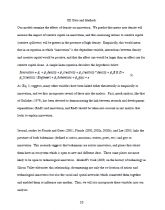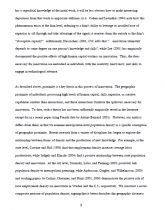Projekt: Urban density, creativity and innovation
Skrýt detaily | Oblíbený- Kvalita:85,8 %
- Typ:Projekt
- Univerzita:Univerzita Tomáše Bati ve Zlíně
- Fakulta:Fakulta managementu a ekonomiky
- Kategorie:Ekonomika
- Podkategorie:Management
- Předmět:Management
- Autor:eliseus
- Rozsah A4:40 strán
- Zobrazeno:1 017 x
- Stažené:0 x
- Velikost:0,6 MB
- Formát a přípona:PDF dokument (.pdf)
- Jazyk:anglický
- ID projektu:2936
- Poslední úprava:27.03.2014
Geographers and social scientists have probed the effects of agglomeration and spatial
clustering on innovation and economic growth. Economists and others have identified the role of
knowledge spillovers in driving the innovation process. While innovation is thus assumed to be a
function of proximity, there has been little systematic research on the role of density in innovation.
Thus, this research investigates density, and more specifically the density of creative workers, as a
key factor influencing regional innovation. It uses principal components analysis to create and
implement a composite measure of density and presents a model of innovation as a function of
creative-density. Statistical analyses including multivariate regression finds that density and creativity
separately and jointly affect innovation in metropolitan areas. The regression analysis finds a
positive relationship between the density of creative workers and metropolitan patenting activity.
This suggests that density is a key component of knowledge spillovers and a key component of
innovation
clustering on innovation and economic growth. Economists and others have identified the role of
knowledge spillovers in driving the innovation process. While innovation is thus assumed to be a
function of proximity, there has been little systematic research on the role of density in innovation.
Thus, this research investigates density, and more specifically the density of creative workers, as a
key factor influencing regional innovation. It uses principal components analysis to create and
implement a composite measure of density and presents a model of innovation as a function of
creative-density. Statistical analyses including multivariate regression finds that density and creativity
separately and jointly affect innovation in metropolitan areas. The regression analysis finds a
positive relationship between the density of creative workers and metropolitan patenting activity.
This suggests that density is a key component of knowledge spillovers and a key component of
innovation




